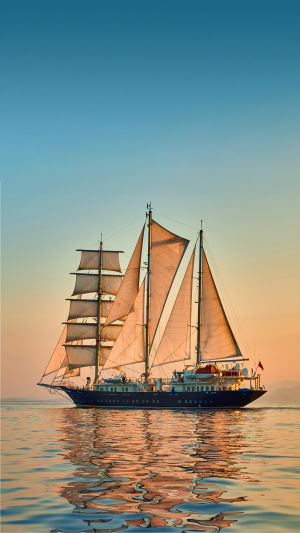Before the advent of steam power, water navigation was partly based on human power, but most of it was still dominated by wind, the so-called sailboats.
In today's life, sailing has become an Olympic sport, and there are quite a few other competitions.
On the other hand, sailing often adds a lot of beauty to a photographer or a trip to the seaside.
But for a long period, sailing has played an irreplaceable role in the material and cultural exchange of mankind as the dominant means of transportation on the sea.
Quadrant Sail
The operation of a quadrangular sail is relatively simple.
Because they are fixed to the mast, they only need to be adjusted to the width of the sail according to the wind, and their direction can only be fine-tuned a little.
This is the oldest type of sail and has been widely used especially in ancient Europe.
From the Hippo War to the Punic Wars, these ships were used.
The triangular sail
The triangular sail is also known as the Latin sail but is now widely believed to have been first invented by the Arabs.
The spinnaker was set on three masts, and the direction of the sail was changed at any time depending on the wind direction, and the sail was changed to a different thickness depending on the wind force.
The sails were not fixed to the mast, so each time the sails were changed, the mast had to be raised and lowered.
Driving this kind of sailboat is a very hard job.
That's why when we see the movie, people are always busy on the deck as the wind changes.
When the wind is blowing, the spinnaker is able to use its large area to provide plenty of power to the sailboat.
But in the changing conditions of the sea, downwind is always a minority, and the spinnaker can be used to great advantage when sailing upwind or downwind.
The principle of a spinnaker going upwind is similar to that of an airplane wing.
This means that when the wind blows, the spinnaker opens to one side because of the difference in wind strength between the two sides.
At this time, the air above is flowing faster and the air below is flowing slower, so the resulting air pressure difference will produce a lateral combined force on the boat.
The force and the direction of the rudder and the direction of the current at the time together can make the boat along the Z-shaped winding forward.
Modern Sailboats
Modern sailing ships are mostly combinations of many sails, which maximize the use of wind energy and adapt to complex and changing sea conditions.
Regardless of the type of sailing vessel, the sails are not the only power source for the boat.
For ships of a certain size, it was still essential to glide by human power below deck and to have a reliable rudder.
After the application of steam power to shipbuilding, the traditional sailing ship, such as a cargo ship or warship, has gradually faded from our attention.
Newly powered, larger "ironclads" began to dominate the seas.
The actual history of sailing boats also has various combinations of sails, resulting in different models of sailing boats.
As a symbol of people's desire for the future and faraway places, we hope this article will give you a better understanding of this beautiful thing.





